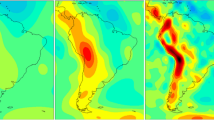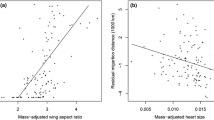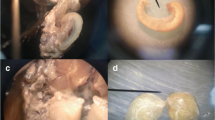Abstract
Human exploration of outer space will eventually take place. In preparation for this endeavour, it is important to establish the nature of the biological response to a prolonged exposure to the space environment. In one of the recent Soyuz Missions to serve the International Space Station (ISS), the Spanish Soyuz mission in October 2003, we exposed four groups of Drosophila male imagoes to microgravity during the almost eleven days of the Cervantes mission to study their motility behaviour. The groups were three of young flies and one of mature flies, In previous space experiments, we have shown that when imagoes are exposed to microgravity they markedly change their behaviour by increasing their motility, especially if subjected to these conditions immediately after hatching. The constraints of the current Soyuz flights made it impossible to study the early posthatching period. A low temperature cold transport was incorporated as a possible way out of this constraint. It turned out that on top of the space flight effects, the cold treatment by itself, modifies the motility behaviour of the flies. Although the four groups increased their motility, the young flies did it in a much lower extent than the mature flies that had not been exposed to the low temperature during transportation. Nevertheless, the flies flown in the ISS are still more active than the parallel ground controls. As a consequence of the lower motility stimulation in this experiment, a likely consequence of the cold transport step, no effects on the life spans of the flown flies were detected. Together with previous results, this study confirms that high levels of motility behaviour are necessary to produce significant decreases in fly longevity.
Similar content being viewed by others
References
Vogel, S. Living in a physical world VII. Gravity and life on the ground. J. Biosci. 31(2), 201–214 (2006).
Marco R, Husson D, Herranz R, Mateos J, Medina FJ. Drosophila melanogaster and the future of ‘evo-devo’ biology in space. Challenges and problems in the path of an eventual colonization project outside the earth.. Adv Space Biol Med.; 9:41–81 (2003)
Horn, E. R. The development of gravity sensory systems during periods of altered gravity dependent sensory input. Adv Space Biol Med. 9:133–71 (2003)
Slenzka, K. Neuroplasticity changes during space flight. Adv Space Res. 31(6):1595–604(2003)
Beller M., Oliver B. One hundred years of high-throughput Drosophila research. Chromosome Res. 14 (4): 349–62. (2006)
Benguria, A.;Grande, E.;de Juan, E.;Ugalde, C.;Miquel, J.;Garesse, R.;Marco, R. Microgravity effects on Drosophila melanogaster behavior and aging. Implications of the IML-2 experiment. J. Biotechnol. 47(2-3): 191–201 (1996)
Armstrong, J. D., Texada, M. J., Munjaal, R., Baker, D. A., Beckingham, K. M. Gravitaxis in Drosophila melanogaster: A genetic screen. Genes, Brain and Behaviour 5, 222–239 (2006).
Leandro LJ, Szewczyck NJ, Benguria A, Herranz R, Medina FJ, Gasset G, van Loon J, Conley CA, Marco R Comparative analysis of Drosophila melanogaster and Caenorhabditis elegans gene expression in the European Soyuz Flights to the International Space Station Adv. Sp. Res. 40(4): 506–512 (2007).
Kraft TF, van Loon JJ & Kiss JZ. Plastid position in Arabidopsis columella cells is similar in microgravity and on a random-positioning machine. Planta. 211(3):415–22(2000).
Berry, M V and Geim, A K, Of flying frogs and levitrons’ Eur.J.Phys 18, 307–313(1997).
Author information
Authors and Affiliations
Rights and permissions
About this article
Cite this article
de Juan, E., Benguría, A., Villa, A. et al. The “ageing” experiment in the spanish soyuz mission to the international space station. Microgravity Sci. Technol 19, 170–174 (2007). https://doi.org/10.1007/BF02919475
Issue Date:
DOI: https://doi.org/10.1007/BF02919475




